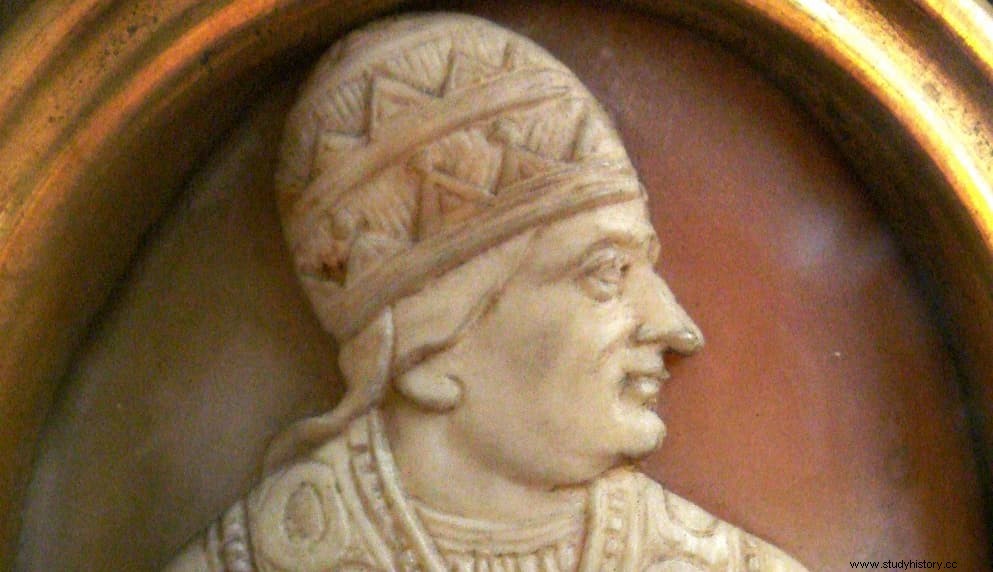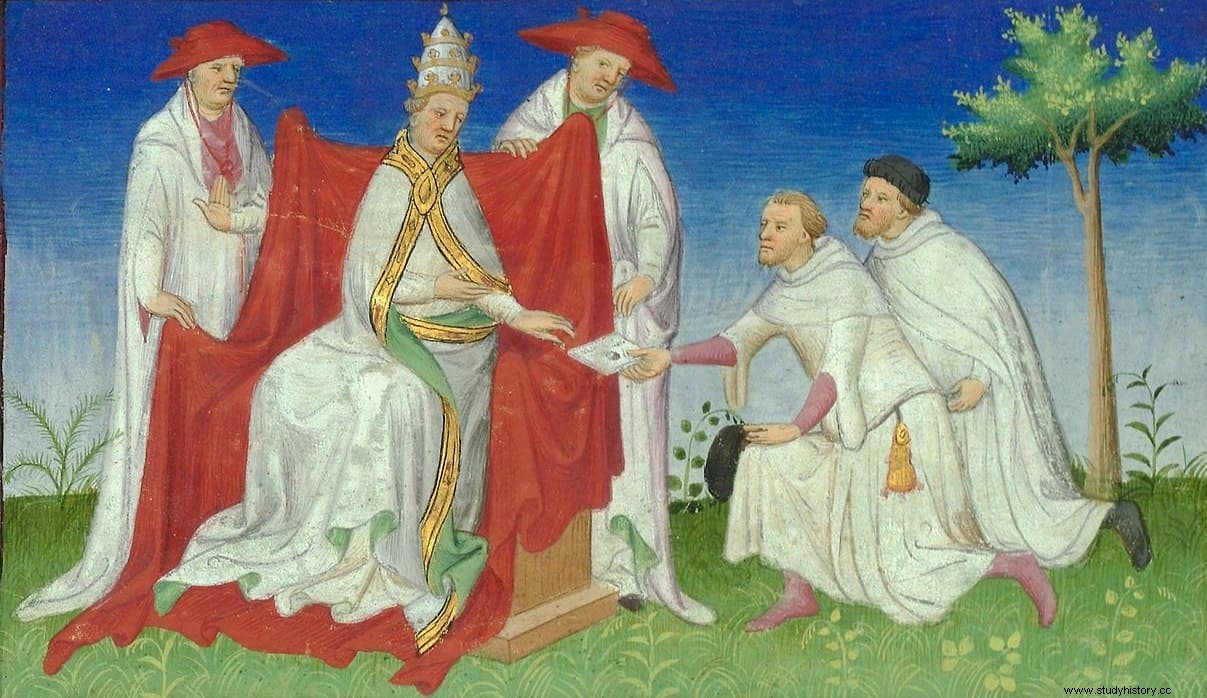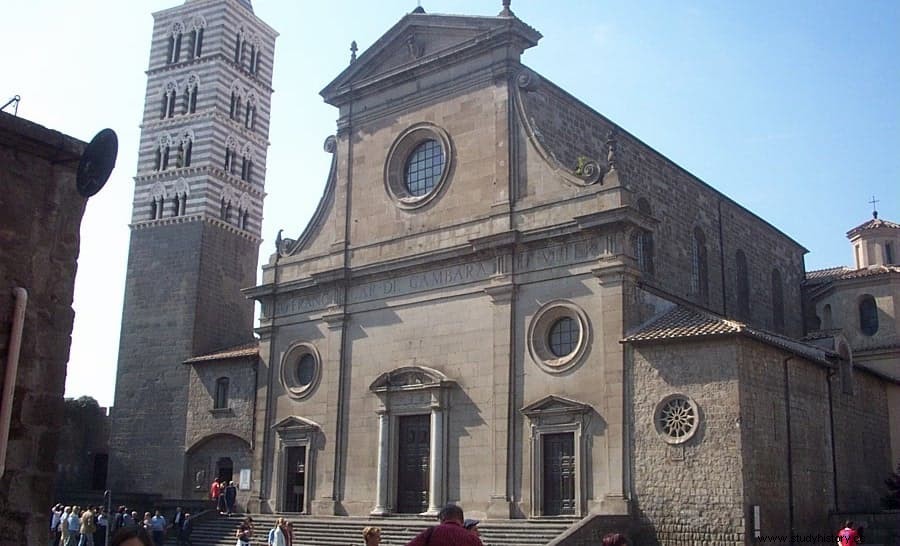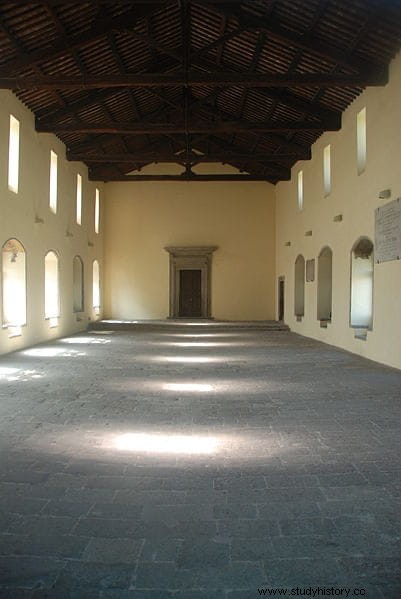When the crowd of devout Catholics that gathers in Saint Peter's Square waiting to see the long-awaited fumata The white one is in its place, the black one, indicating that there has been no agreement to elect Pope, he is usually deeply disappointed. Sometimes this situation is repeated more than once until the conclave of cardinals reaches a consensus, but never like the one that occurred following the death of Clement IV in 1268:almost three years would pass before they reached an agreement and only it was achieved thanks to the pressure of the citizens, fed up with that uncomfortable position.
Malachi of Armagh, archbishop of the Irish town of the same name, canonized by Pope Clement III in 1190 due to his efforts to morally rearm the Church of Ireland and persecute paganism, became especially famous for several prophecies he formulated.
Here we are interested in highlighting what is known as the Prophecy of the Popes , in which he anticipated a list of the one hundred and twelve prelates who would occupy the throne of Saint Peter in the future until the destruction of Rome would come with the last one. He obviously did not name them expressly or in an orderly manner and, in fact, today it is considered that this list is several centuries later, also retouched to make it coincide with the real one.

The thing is that one of the names he cited was Anguineus vir (the Serpent Man, in Latin), which has been identified with Gregory X because his heraldic coat of arms, belonging to the Milanese Visconti family, shows the representation of a man devouring a snake. Teobaldo Visconti, which was his real name, was born in 1210 in Plasencia (not the Spanish city but the Italian one, in the northern region of Emilia-Romagna) but, already with his life oriented towards religion, he lived in Lyon and Liège. , in addition to spending a season in the Holy Land, between the Eighth and the Ninth Crusades, as a papal legate in the entourage of Prince Edward (the eldest son of Henry III of England).
In 1271 he was precisely in San Juan de Acre - where, by the way, he met Marco Polo and his uncles, who were on their way to Asia - when they told him a news that surely left him confused:they had just elected him Pope . The news was doubly unusual. First, because the Church had been without a Supreme Pontiff for a whopping thirty-four months; almost three years without a head to direct it since the death of Clement IV in 1268.
The fault of that situation was in the ancestral polarity of the Italians:if the most visible episode of it was the radical opposition between Guelphs and Ghibellines (the first supporters of the Papacy to govern the Italian territories and the second of the Holy Roman Empire), the cardinals meeting in conclave at Viterbo were also irreconcilably divided between a French and an Italian faction.

The second reason that must have surprised Teobaldo in that choice was that he was not even a priest but rather an archdeacon or archdeacon:he was a deacon (that is, someone who has received the priestly sacrament but has not yet reached that dignity and cannot say mass) who was normally in charge of the cathedral administration. For this reason he had to be ordained on the spot, while he was traveling to Rome, and consecrated bishop a few days later, already in the city. It was then that, following tradition, he changed his name to Gregory X and his pontificate could begin.
But we could consider the circumstances in which the final vote took place as a further cause for stupefaction. As we said before, the cardinals were divided into two groups, the French and the rest (mostly Italian), each with its candidate, who varied over time but always followed divergent directions. The Gauls tried to favor the interests of Charles of Anjou, King of Sicily and brother of Louis IX of France, who was trying to consolidate his Mediterranean empire (finally disrupted by his great geostrategic enemy, the Kingdom of Aragon). Getting a supporter placed in Rome was a clear plus point, which is why they were known under the heading Pars caroli (Caroline Party).

The other cardinals were radically opposed, forming the Pars Imperii (Party of the Empire), because they preferred to remain under the influence of the Holy Empire, so that it was also identified with the Ghibellines. Besides, the Italians had two other factions, the one that defended Cardinal Giovanni Gaetano Orsini, who ended up merging with the Carolines, and the one that was in favor of the protodeacon Riccardo Annibaldi, who did it with the imperials. Thus, proposals were succeeded by some that knocked down the others and vice versa. In fact, not only candidates because one of the cardinals, the old Rodolfo de Albano, died during the conclave, leaving the number of electors at nineteen; and in the second suffrage, that of 1271, two others were absent due to illness.
The conclave was held in the Duomo from Viterbo, a city in Lazio, because tradition ordered to meet in the cathedral of the place where the previous Pope had died and the death reached Clement IV there. But the situation dragged on with no sign of a solution, so the discontent of the people began to manifest itself in aggressiveness and this materialized in an unprecedented popular initiative led by the local prefect, Raniero Gatti and the podestá (first magistrate) Alberto de Montebono:take the curia to the episcopal palace -which had been converted into a papal palace- and leave it clausi cum clave (i.e. locked up), fed only bread and water until a decision was made.

Not all sources agree on this because others say that it was the idea of a cardinal so that the inspiration of the Holy Spirit would come better and some attribute the responsibility to Charles of Anjou. In any case, and curiously, that expeditious decision led to the establishment of a procedure called Ubi periculum (In case of danger), which sought to speed up the process of electing the new popes and prevent a situation like that from repeating itself:total isolation, limitation of the number of servants, progressive reduction of meals and suspension of salaries. The Ubi periculum it would be revoked and reinstated more than once in time, depending on whether everything seemed to be going well or the old ways returned.
And to make it all more exciting, people demolished the roof of the building, leaving such rare prisoners exposed to the elements. It is true that pressures also came from higher authorities, such as the European monarchies. Thus it was that the cardinals chose to delegate their authority to a committee made up of only six of them, three of whom were Imperials, two Orsini supporters and the last Annibaldi, excluding the French intriguers. It was this select group that chose Gregory X, whom they crowned on March 27, 1272, and who was precisely the one who established the Ubi periculum .
